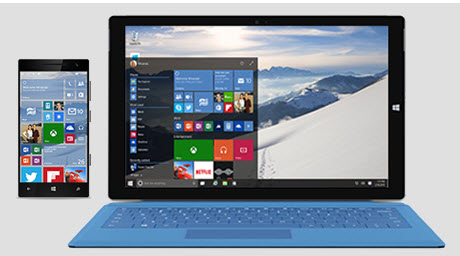Why it doesn't matter if Windows 10 is (or isn't) the last version of Windows

As Microsoft made clear last year by skipping "Windows 9" when going from Windows 8 to Windows 10, Windows version numbers are an arbitrary thing.

Many of us Microsoft watchers had been saying that Threshold (Windows 10) would be the last major version of Windows for months, if not a year. Microsoft Developer Evangelist Jerry Nixon said the same thing last week at Ignite in a session entitled "Tiles, Notifications and Action Center."
Cue the headlines claiming that Microsoft has now officially declared Windows 10 the end of the Windows trail.
As those who've been paying attention know, Windows 10 technically isn't the last Windows release. It might or might not be the last Windows release granted a new version number. But that's basically a branding decision.
Microsoft will continue to update Windows 10 with regular security updates, fixes and new features. Those who sign up for Microsoft's free Windows upgrade deals -- via which consumers running Windows 7 and 8 will get a free upgrade to Windows 10 -- agree as part of that deal to get all the updates to Windows 10 that Microsoft delivers pushed to them automatically.
(For those wondering what the "for the lifetime of the device" support statement means, in terms of the free Windows 10 upgrade deal, I asked Microsoft again last week for comment on this and was told the company isn't yet ready to disclose those particulars. I'll keep asking.)
Those who don't want all the updates, and want the option to stagger their delivery, can opt to go the Windows Update for Business route. Those who choose this option will have the choice of getting security fixes only. Also -- despite headlines from last week claiming Patch Tuesday is now dead -- this is not the case.
"Windows Update for Business can take responsibility for the timely distribution of security updates for customers for free. Customers that choose to distribute updates themselves will continue to receive the updates on the 2nd Tuesday of the month," said a Microsoft spokesperson when asked for an official denial of bogus reports of Patch Tuesday's demise.
Microsoft officials can opt at any time to call a set of updates to Windows 10 a new version. There are already at least three "bigger" sets of updates (that I've heard about from my sources) on the Windows 10 release timeline: An update this fall (possibly October); an update next spring and another in the fall of 2016 (the latter two are part of a wave codenamed "Redstone").
Microsoft is unlikely to label any of these things Windows 11 or 12 or even lucky 13 because the company is trying to get its customers to understand its "Windows as a Service" positioning -- which, as my Windows Weekly podcast co-host Paul Thurrott notes, has already been the way Windows has been updated/serviced for a while now.
Microsoft also wants to try to get more Windows users on a single release, as evidenced by its "Windows 10 on one billion devices by 2018" goal.
Bottom line: Nobody panic. Windows 10 isn't the end of the road. Patch Tuesday isn't dead. IE 11 will still be available with the desktop SKUs of Windows 10 for backward compatibility reasons. The words and positioning may be different, but especially for business customers, the Windows song remains largely the same.